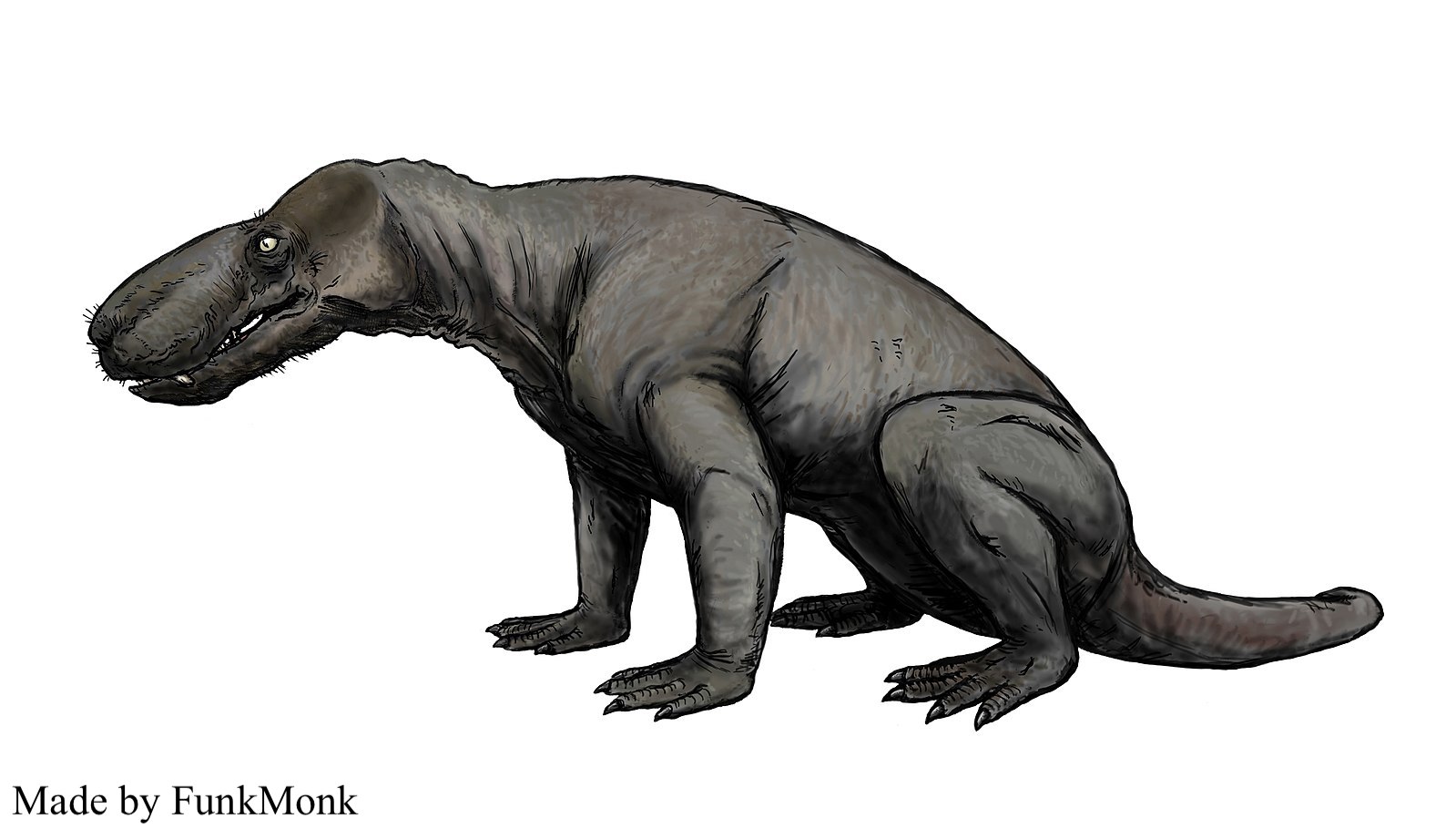Welcome to Aelurognathus

Name Definition
Cat jaw
Name Given By
Sydney H. Haughton in 1924 (Aelurognathus tigriceps was originally named as Scymnognathus tigriceps by Haughton and Robert Broom in 1913)
Location
Karoo Basin of South Africa
Classification
Therapsida, Neotherapsida, Theriodontia, Gorgonopsidae, Rubidgeinae
Size
about 1.6 ft (0.5 meters) tall, 1.5 meters long
Temporal Range
Wuchiapingian stage of the Lopingian epoch in the Permian period, around 260 - 254 million years ago
Ecological niche
small scavenger
Species/Sub Species
A. tigriceps
Diet
a broken tooth attributed to Aelurognathus was discovered besides those of dicynodont remains, indicating that Aelurognathus was most likely a scavenger ; based on the morphology of the incisors, it is also noted that Aelurognathus probably was more adapted to stripping flesh than feed on the bone marrow in the bones
Introduction
Aelurognathus is a genus of gorgonopsid therapsids that lived in Permian South Africa. Based on the small incisor teeth of Aelurognathus, it is most likely that it stripped off flesh from carcasses rather than have crushed bones. This behavior is comparable to the modern day Lycaon pictus which is also known as the African wild-dog or the painted dog. In addition to this, the dicynodont skeleton that was found near the Aelurognathus tooth is considerably more scattered at the rear, suggesting that Aelurognathus probably fed on the rear and hind limbs to get into the soft inside of the body, as well as contributing to the immobilization of the prey item. This is another indication as to why Aelurognathus did not feed on bones. Aelurognathus is in the subfamily Rubidgeinae and is closely related to others like Rubidgea and Sycosaurus.